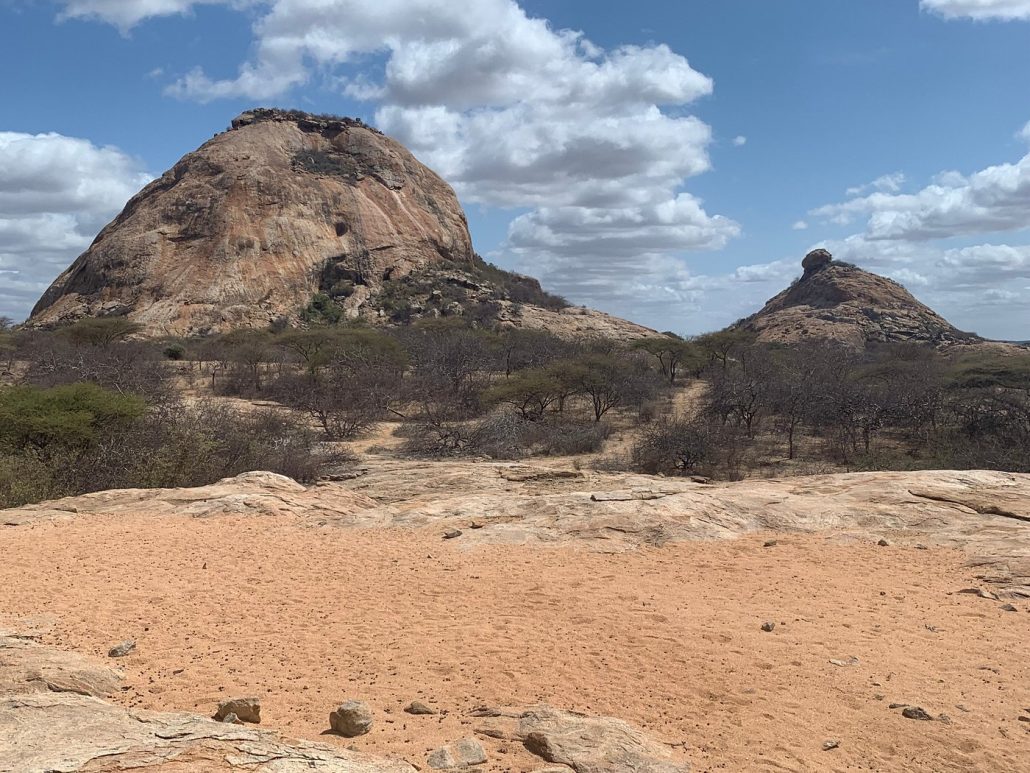Kora National Park
Kora National Park, located in the eastern part of Kenya, is a hidden gem that spans approximately 1,787 square kilometers (690 square miles) along the banks of the Tana River. Established in 1989, this park is a blend of breathtaking landscapes, including savannahs, riverine forests, and rugged hills. Kora is rich in biodiversity and offers a unique opportunity to explore Kenya’s natural beauty away from the more crowded parks. The park was formerly a hunting reserve and has since transitioned into a protected area, making it a sanctuary for various wildlife species, including some that are less commonly seen in other parks. Kora National Park is a perfect destination for adventurous travelers seeking a blend of wildlife viewing, tranquility, and stunning landscapes.

Wildlife in Kora National Park
Kora National Park is home to a diverse array of wildlife, showcasing the ecological richness of the region. Among the notable residents are elephants, lions, leopards, and various species of antelope, such as the grant’s gazelle and oryx. The park’s varied habitats support numerous mammals, including the endangered African wild dog, which can occasionally be spotted. Kora’s diverse ecosystems also provide refuge for smaller mammals, such as monkeys, baboons, and numerous rodents. The park’s strategic location along the Tana River ensures a constant supply of water, attracting various animals, particularly during the dry season, when wildlife congregates around the riverbanks.
Scenery Of Kora National Park
The scenery in Kora National Park is characterized by dramatic landscapes that include rolling hills, vast savannahs, and the winding Tana River. The park’s natural beauty is enhanced by the sight of acacia trees dotting the plains and the lush riverine forests along the riverbanks. The combination of open grasslands and dense thickets creates a diverse environment that offers stunning views and excellent opportunities for wildlife photography. Visitors can also explore rocky outcrops and elevated viewpoints that provide panoramic views of the park and the Tana River, creating a picturesque backdrop for any adventure.
Birds in Kora National Park
Kora National Park is an excellent destination for birdwatchers, boasting a rich diversity of bird species. With over 300 bird species recorded, the park is home to both resident and migratory birds. Notable species include the African fish eagle, white-bellied go-away bird, and various types of kingfishers. The lush riverine forests along the Tana River provide ideal habitats for numerous birds, while the open savannahs attract raptors and ground birds. Birdwatching enthusiasts can enjoy spotting a variety of species throughout the year, with the wet seasons often bringing in more migratory visitors.
Weather and Climate
Kora National Park experiences a semi-arid climate, with warm temperatures and distinct wet and dry seasons. Average daytime temperatures range from 25°C to 35°C (77°F to 95°F), while nights can be cooler, dropping to around 15°C (59°F). The rainy season typically occurs from March to May and again from October to December, bringing substantial rainfall that rejuvenates the landscape. The dry season from June to September is ideal for wildlife viewing, as animals gather around water sources, making it easier to spot them. Visitors are encouraged to check seasonal weather patterns to prepare adequately for their trip.
Getting To Kora National Park
Kora National Park is located approximately 400 kilometers (248 miles) northeast of Nairobi. The most common way to reach the park is by road, with access from major towns such as Meru and Garissa. The journey typically involves a mix of paved and gravel roads, so a four-wheel-drive vehicle is recommended, especially during the rainy season when roads can become challenging. Public transport options, such as buses or matatus, can take travelers to nearby towns, from where they can hire local transportation to the park. There are no commercial airstrips within the park, but nearby airstrips in Meru or Isiolo provide options for charter flights for those looking for a quicker route.
Activities to Do In Kora National Park
Kora National Park offers a range of activities that allow visitors to fully experience its unique landscapes and diverse wildlife. Some of the activities include:
- Game Drives: Explore the park in a 4×4 vehicle, allowing for close encounters with wildlife and opportunities for photography.
- Birdwatching: Engage in birdwatching tours to spot a variety of species in their natural habitats.
- Guided Nature Walks: Experience the park on foot with knowledgeable guides, providing insights into the local flora and fauna.
- Camping: Set up camp within designated areas to enjoy a night under the stars, surrounded by the sounds of nature.
- Photography: Capture the stunning scenery and diverse wildlife, providing perfect opportunities for both amateur and professional photographers.
- Cultural Visits: Engage with local communities to learn about their culture, traditions, and conservation efforts in the region.
- Fishing: Enjoy fishing along the Tana River, where various fish species can be found, though fishing regulations should be followed.
With its unique blend of wildlife, scenic beauty, and opportunities for adventure, Kora National Park is an unforgettable destination for nature lovers and explorers seeking a true wilderness experience.
Safety and Vaccination
When visiting Kora National Park, safety should be a priority. While the park is generally safe for tourists, it is advisable to travel with a qualified guide to enhance safety and provide insight into the park’s ecology. Before embarking on a trip to Kenya, travelers should consult with their healthcare providers regarding necessary vaccinations. Common recommendations include vaccinations for yellow fever, hepatitis A, and typhoid. Additionally, given that malaria is present in certain areas, particularly during the wet seasons, travelers should consider taking antimalarial medication and using mosquito repellents to reduce risk.
Park Rules
Kora National Park has specific rules in place to protect its natural environment and wildlife. Visitors are expected to stay on designated paths and trails to minimize environmental impact. Feeding or attempting to approach wildlife is strictly prohibited, as it can disturb their natural behaviors and disrupt the ecosystem. Noise levels should be kept low to maintain the serenity of the park and avoid scaring away animals. Littering is not allowed; all visitors should carry out any waste they generate to help preserve the park’s beauty. Respecting these rules ensures that the park remains a sanctuary for wildlife and a pleasant experience for all visitors.
